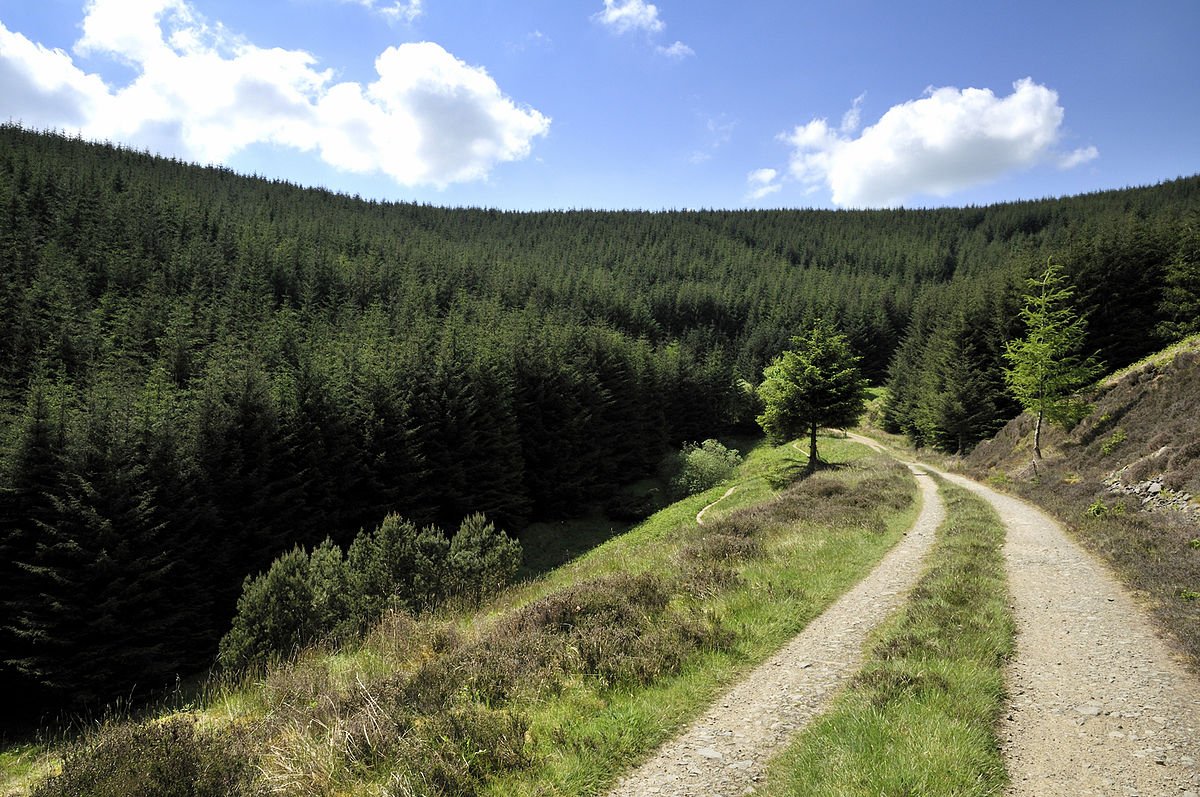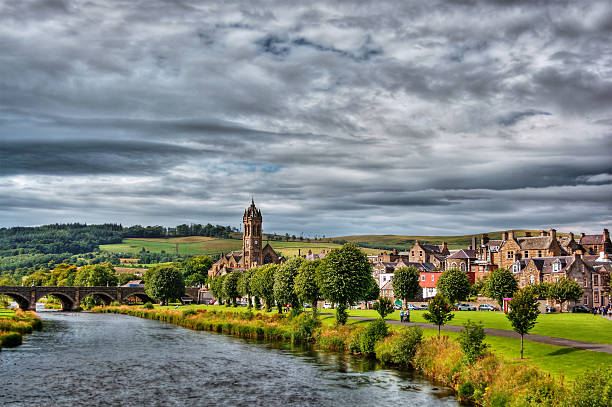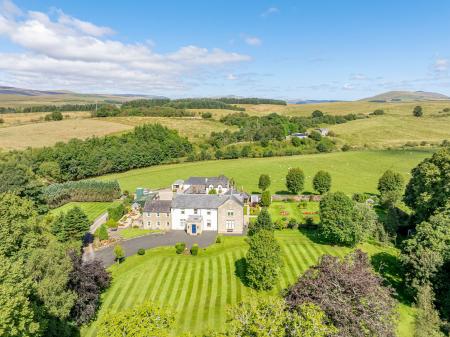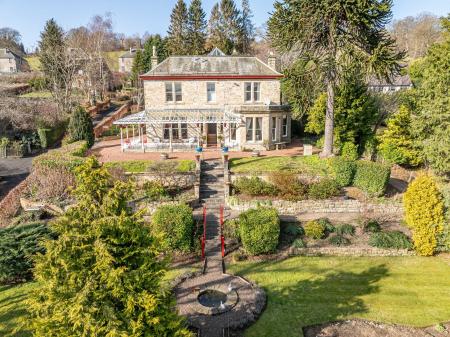The landscape of the Scottish Borders varies from west to east. The western part has rolling hills and beautiful lochs such as St Marys Loch, one of the most beautiful lochs in Scotland according to the author. The central part of the Borders has a more rural character while the eastern part, bordering the North Sea, has some hidden gems such as the seaside village of St Abbs and the former fishing village of Cove. The river Tweed crosses the entire area of the Borders starting at the south-east at Tweed’s Well and flowing gradually to the east where the river flows into the North Sea at Berwick upon Tweed. On the banks of this beautiful river you can find lovely and romantic villages such as Peebles, Innerleithen and Melrose.
The Scottish Borders, which is also referred to simply as the Borders, stretches from the Pentland, Moorfoot and Lammermuir Hills that mark the boundary with the Lothians in the north, to the Cheviot Hills which, along with the River Tweed, mark the border with England in the south. Along with Dumfries & Galloway this area of Scotland is referred to as the Southern Uplands.
The town of Selkirk has a rich history stretching back to the 12th century. With its early beginnings as a royal castle on Peel Hill. Historically important with William Wallace being named as ‘Guardian of Scotland’ here, and James V confirmed Royal burgh status in the 16th century in recognition of the townspeople’s loyalty to the Crown. The world-famous Selkirk Common Riding commemorates the riding of the marches and the Battle of Flodden in 1513 with the Casting of the Colours acting as a poignant reminder of the battle. The town also has a long association with the Scottish historical novelist, Sir Walter Scott, who served as Sheriff for 33 years. Nowadays Selkirk is a traditional market town with a history in farming and textiles and a warm welcome for visitors. The town is centred on the Market Place and defined by the Ring o’ the Toun.
The Scottish Borders are steeped in history as it was once the home of Christian monks who lived in the magnificent Border Abbeys of Dryburgh, Melrose, Kelso and Jedburgh in the 13th and 14th centuries. Later the Borders were the scene of a devastating battle at Flodden Field. It’s a fascinating area for those who love history but also for people who like to walk, cycle and discover the many different faces of this pretty part of Scotland.
Looking to buy a property in Scottish Borders?
Browse through our collection of exquisite properties in the area.
Highlights and Attractions
Visit Floors Castle

Floors Castle is one of the most iconic country houses in Scotland, Scotland's largest inhabited castle and one of the leading visitor attractions in the Scottish Borders.
Explore the interior of the building with its collection of fine art, tapestries and superb views, enjoy a walk through the wooded grounds and amble around the stunning Victorian walled gardens. There is a gift shop, deli and a two cafes.
Explore Glentress

Situated just one hour from Edinburgh, Glentress is one of the famous 7stanes mountain bike trail centres with award-winning trails that attract riders from the UK and beyond.
You don't have to be an experienced mountain biker to enjoy these famous trails; there are a wide range of routes to suit beginners, families and professionals. A cafe offers good local produce and the bike shop offers friendly advice on bike hire, sales and repairs.
Walk the Borders Abbey Way

Ideal for walking in sections, this historic trail is a circular route through the heart of the Scottish Borders. At 64.5 miles in length, it passes four 12th century abbeys and several towns. The route is ideal for taking in some of the main highlights of the region while also discovering some hidden gems. Along the way you'll see Hawick, Selkirk, Newtown St Boswells, Denholm and Abbotsford among others. The route can also be explored by car by driving a very similar route on quiet country roads.
Shop in Peebles

The Royal Burgh of Peebles is located on the River Tweed, at the confluence with Eddleston Water, in the county of Peeblesshire, approximately 385 miles north of London and 19 miles west of Galashiels.
Renowned for its salmon fishing, Peebles is an attractive and peaceful town of wide streets and fine architecture which is predominantly Victorian. There are good shopping and leisure facilities and numerous visitor attractions in and around the town, and it is a good base from which to explore the surrounding area.
Do you need an expert to value your property?
Contact us for a no-obligation market appraisal.


